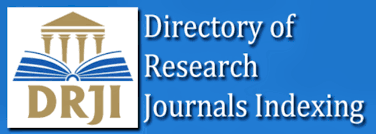Effects of computer-assisted instruction on students’ achievement in atomic and nuclear physics in Senior Secondary Schools in Rivers State
DOI:
https://doi.org/10.30574/gscarr.2020.2.3.0015Keywords:
Computer, Assisted, Instruction, Achievement, Students, PhysicsAbstract
The study examined the Effects of computer-Assisted Instruction (CAI) on students’ achievement in Atomic and Nuclear Physics in Rivers state. The objective of the study was to determine the difference in the academic achievement Physics students when taught atomic and nuclear physics with CAI and lecture method. The study adopted pretest-posttest design of quasi-experimental research. The study was carried out in Rivers state senior secondary schools. The population of the study comprised of all senior secondary school 3 physics students in Rivers state. The sample size of the study was drawn using purposive random sampling. The total sample size of the study was one hundred and twenty (120). The sample size was grouped to control (60) and experimental groups (60). The instrument used for the study was an achievement test which was tagged “Atomic and Nuclear Physic Achievement Test (ANPAT)”. The instrument consisted 40 Multiple Choice Question (MCQ). The instrument was sectioned into four parts, each section measured students’ knowledge on the models of atom, energy quantization, photoelectric emission and thermionic emission. The reliability of the instrument was tested using test-retest method which yielded 0.88 reliability coefficient. Mean and standard deviation was used for data analysis while t-test was used to test the hypotheses at 0.05 level of significance. It was found that students that were taught atomic and nuclear physics with CAI (60.5) have higher mean achievement scores than those taught with lecture method (44.1). This implies that students taught atomic and nuclear physics using computer assisted instruction performed better than those taught with lecture method. The t-test analysis also showed that the differences that exist in the mean are statistically significant at 0.05. Thus, the study recommended that government should assist the schools to make adequate computers available for teaching and learning physics in secondary schools.
Metrics
References
Liao Y. (2004). Effects of computer-assisted instruction on students’ achievement in Taiwan: A meta-analysis. Computers & Education, 48, 216–233.
Nazimuddin SK. (2014). Computer Assisted Instruction (CAI): A new approach in the field of education. International Journal of Scientific Engineering and Research (IJSER), 3 (7), 185-188.
Seo Y and Bryant P. (2009). Analysis of studies of the effects of computer-assisted instruction on the mathematics performance of students with learning disabilities. Computers & Education, 53, 913-928.
Bennett S. (2012). The effects of Computer Assisted Instruction on rural Algebra I Students.
Qaiser S, Hussain I, Ud Din N and Iqbal K. (2017). Effects of Computer-Assisted Instruction (CAI) on Students’ Academic Achievement in Physics at Secondary Level. Computer Engineering and Intelligent Systems, 8 (7), 9-18.
Onasanya SA, Daramola FO and Asuquo EN. (2006). Effect of Computer Assisted Instructional Package on Secondary School Students’ Achievement in Introductory Technology in Ilorin, Nigerian. The Nigeria Journal of Educational Media and Technology, 12(1), 98-107.
Wishart J. (2002). Students and Teacher’s Motivation and Learning through Use of CD –ROMs. Journal of Multimedia and Hypermedia, 9(4), 333-47.
Agah TG and Gunduz S. (2011). The effects of computer assisted instruction practices in computer office program course on academic achievements and attitudes toward computer. Procedia Social and Behavioral Sciences, 15, 1931–1935.
Gana CS. (2013). Effects of Computer Assisted Instruction with Animation on Achievement and Retention of Students of Colleges of Education in Quantum Physics. Unpublished PhD Thesis, Department of Science Education, University of Nigeria, Nsukka.
Bartlett RM, Cheng S and Strough J. (2000). Multimedia versus traditional course instruction in undergraduate introductory psychology. Poster presented at Annual American Psychological Association.
Chera PDK and Wood C. (2003). ‘Animated multimedia ‘talking books’ can promote phonological awareness in children beginning to read’ Learning and Instruction, 13, 33–52.
Bhalla J. (2013). Computer Use by School Teachers in Teaching-learning Process. Journal of Education and Training Studies, 1(2), 174-186.
Meltzer DE and Manivannan K. (2002). Transforming the lecture-hall environment: The fully interactive physics lecture. American Journal of Physics, 70(6), 639-654.
WAEC. (2019). West African Examination Council syllabus.
Nwanne SC and Agommuoh PC. (2017). Computer Assisted Instruction (Cai) On Students’ Interest And Achievement In Physics In Imo State, Nigeria. IOSR Journal of Research & Method in Education (IOSR-JRME), 7 (3), 53-58.
Okebukola. (2007). Workshop Organisation, Safety and Gender Equality in TVE at Secondary Education Level. A paper presented at 2008 Serminar/workshop Services of Nigerian Association of Teachers of Technology (NATT). Held at Federal College of Education (Technical). Akoka.
Downloads
Published
How to Cite
Issue
Section
License
Copyright (c) 2020 T Adolphus, M Omeodu

This work is licensed under a Creative Commons Attribution-NonCommercial-ShareAlike 4.0 International License.












